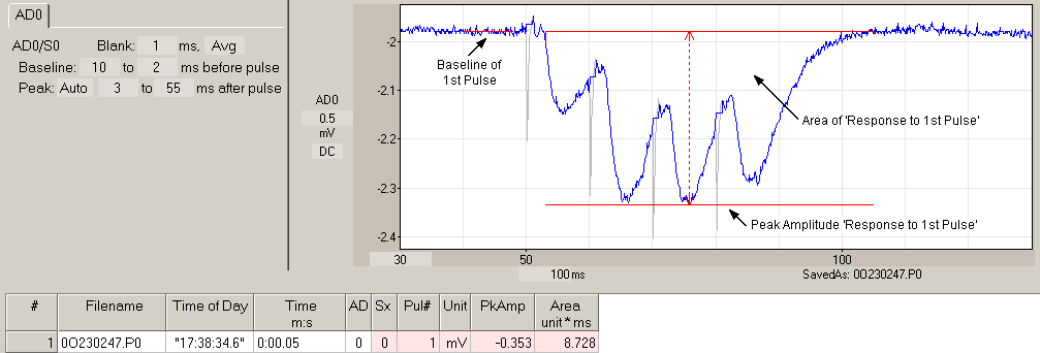User manual

119
4.13.1 Analyze no pulses in train
With this radiobutton selected, no analysis of the pulses in the train occurs (this is also not yet
implemented).
4.13.2 Analyze whole train by analyzing only first pulse in train but detecting
whole train
Second, trains can also be analyzed as a single entity. If the baseline and response of only the first train
pulse is used, all stimulus artifacts are blocked, and the time of measurement is set sufficiently long to
encompass the whole train, then the synaptic response of the entire train will be measured (Fig. 4.13.2.1).
With this analysis, the peak amplitude of the largest EPSP in the train and the area of the synaptic
response of the entire train can be obtained. Removal of stimulus artifacts is necessary to permit
accurate calculation of area and peak amplitude without contamination by stimulus artifacts occurring
near the fEPSP peak. Note the one measurement in the spreadsheet, one for the first pulse, e.g. the
whole train.
Fig 4.13.2.1. Analysis of trains as a single entity by using the baseline and response of only the first pulse
in the train, but with the time of measurement set to a sufficiently long duration after the first stimulus
pulse (3 to 55 ms here) to encompass the whole train. This measures the peak amplitude of the largest
fEPSP in the train and the area of the entire synaptic response of the train. Accurate calculation of area
requires removal of stimulus artifacts.
4.13.3 Analyze train using baseline of the first pulse and response of the
last pulse
Third, trains can also be analyzed by using the baseline of the first pulse and response of the last pulse
(Fig. 4.13.3.1). This measures the response at the end of the train regardless of the length of the train. In
addition to measuring the last synaptic response of a train, this is useful for measuring responses that
only occur after the train has ended, such as post-inhibitory rebound.










